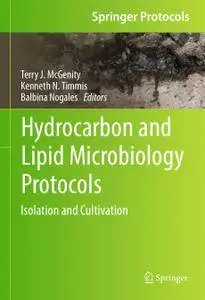Hydrocarbon and Lipid Microbiology Protocols: Isolation and Cultivation By Terry J. McGenity, Kenneth N. Timmis, Balbina Nogales
English | PDF | 2017 | 317 Pages | ISBN : 3662451786 | 5.5 MB
This Volume describes methods for cultivating hydrocarbon-producing and -consuming microbes, covering compounds in a range of states – gaseous (e.g. methane), liquid (e.g. alkanes of intermediate molecular weight) and solid (e.g. many PAHs and asphaltene). It also examines the cultivation of aerobic and anaerobic hydrocarbon degraders using a range of electron acceptors (e.g. oxygen, nitrate, sulphate, metals, (per)chlorate), and a separate chapter is devoted to explaining the cultivation of methanogens.
Special attention is given to: high-throughput cultivation, growing microbes as biofilms, and cultivating fastidious microbes, as well as the preservation of microbial pure cultures and consortia. Accordingly, this Volume will be of value to anyone embarking on the selective enrichment and cultivation of novel microorganisms.
Hydrocarbon and Lipid Microbiology ProtocolsThere are tens of thousands of structurally different hydrocarbons, hydrocarbon derivatives and lipids, and a wide array of these molecules are required for cells to function. The global hydrocarbon cycle, which is largely driven by microorganisms, has a major impact on our environment and climate. Microbes are responsible for cleaning up the environmental pollution caused by the exploitation of hydrocarbon reservoirs and will also be pivotal in reducing our reliance on fossil fuels by providing biofuels, plastics and industrial chemicals. Gaining an understanding of the relevant functions of the wide range of microbes that produce, consume and modify hydrocarbons and related compounds will be key to responding to these challenges. This comprehensive collection of current and emerging protocols will facilitate acquisition of this understanding and exploitation of useful activities of such microbes.



